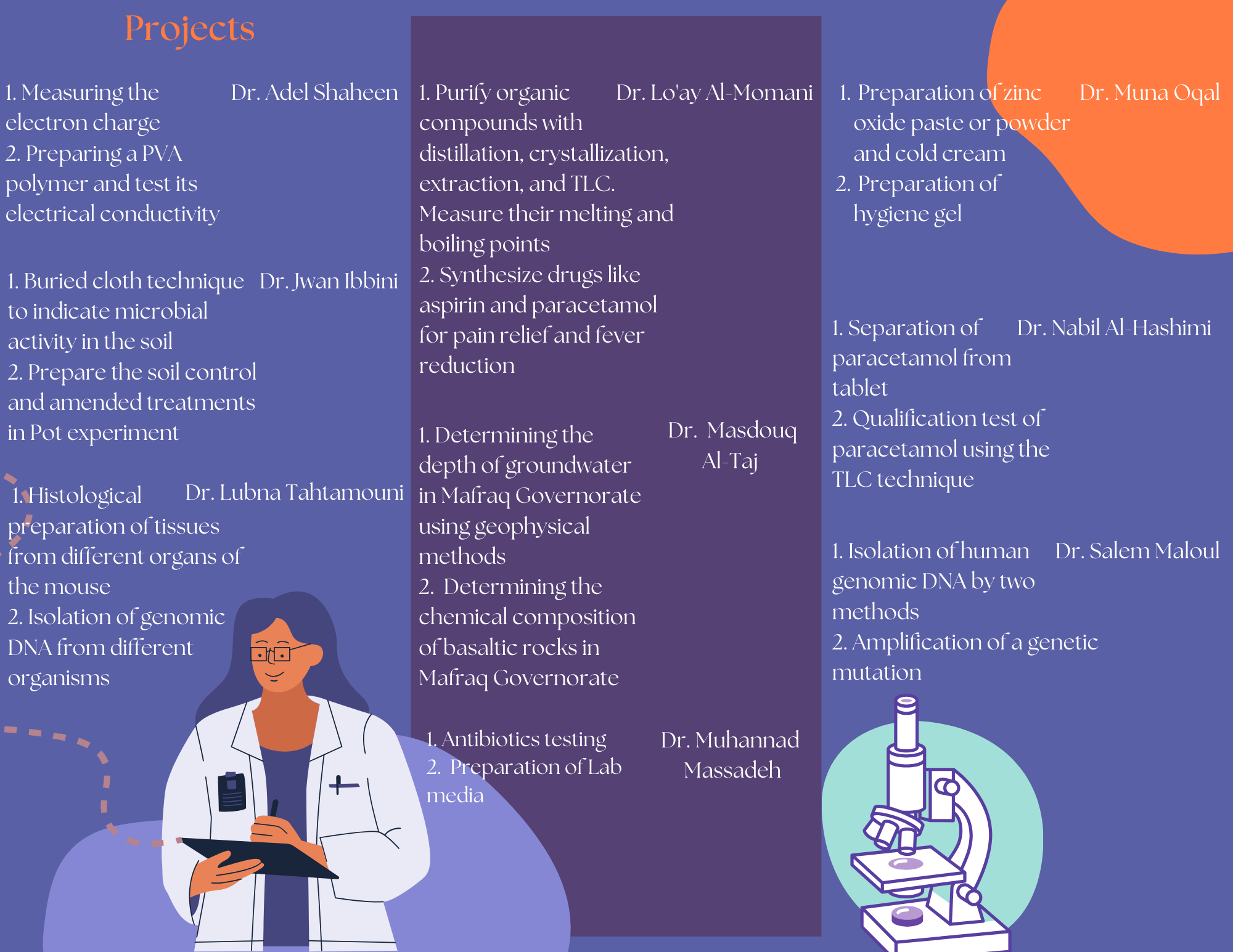Project title:
Research Experience in Life Sciences for High School Girls from Jordan Disadvantaged Regions
Period: 2023-2024
Funding agency: International Cell Research Organization (ICRO)-UNESCO
The project aims to expose high school girls (14-16 years) to the broad range of research areas in Life Sciences. The targeted participants are from disadvantaged regions around the Hashemite University (Jordan) from the city of Al-Mafraq, where opportunities for wet lab experience are limited if existent. The project that spans 6 weeks during the summer, distributes 10 girls to 10 different labs, some are run by a female principal investigator, who work on different aspects of Life Sciences.
The different projects teach the students how to derive hypothesis, design a project and analyze results, and to effectively explain their project and results to their peers, undergraduate students, and professors in oral and written format. This will give these high school girls the opportunity to learn about the modern techniques in Life Sciences, introduce them to female role models, and most importantly encourage them to remove the barriers (personal, and societal) that hinder them from engaging in science as a future career. This in turn will translate the rise in women educational attainment into labor force participation.









